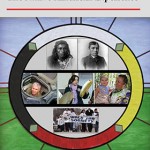By Elizabeth Garbee
Slate, October 20, 2017 —
A pervasive metaphor in STEM education has some serious flaws.

Sinngern Sooksompong/iStock
If you’ve spent any time listening to conversations about STEM education, you’ve surely heard about the pipeline.
Different groups talk about variations of the pipeline. Some describe a pipeline from science education to a STEM career, or as a way to describe a treacherous path through such an education that loses many female, black, Latino, or American Indian people along their educational careers. But the variations are all based on an idea that impacts entire sectors of our 21st-century economy: the preschool-to-Ph.D. pipeline.
Imagine, if you will, a toddler at the top of a tube slide that begins with early education and ends with earning a STEM—science, technology, engineering, or math—Ph.D., eventually becoming the chair of a university physics department or a researcher at a national lab. This pipeline is eroded away by social and cultural forces that keep talented individuals from “making it.” People tend to “leak out” at the bachelor’s or master’s degree levels as they leave school to go find a job or change their career paths altogether. It’s a clunky, even grating metaphor. This pipeline is almost always talked about in terms of leaks. If you’ve dripped out, you’ve dropped out. Inherent in this metaphor is the negative connotation associated with the language of “leaks,” evoking images of dysfunctional faucets. While there are variations of the pipeline—one from science education to a STEM career, or one focused on efforts to bring more women and people of color into the field—they are all based on the idea that there is a rigid, prescribed preschool-to-Ph.D. path.
Over the years, more than 135,000 academic articles have discussed the STEM pipeline in some form or another—including almost 14,000 just about the leaky pipeline. This metaphor also features prominently in “Rising Above the Gathering Storm,” the National Academies report largely responsible for the wave of educational policy in the 1990s that paved the way for No Child Left Behind and the America COMPETES acts, both signed by President George W. Bush. Colleges all across the country have adopted the pipeline as a way of setting recruitment and retention goals.
There’s even a column in Science called “In the Pipeline,” which discusses issues related to the system by which we produce STEM Ph.Ds.

Despite such widespread use and acceptance, this preschool-to-Ph.D. pipeline actually poses a threat to the value of these degrees. It perpetuates the myth that we don’t have enough STEM Ph.D.s because it inherently implies that a Ph.D. is more valuable than all other educational outcomes, the successful endpoint in a pipeline otherwise filled with undesirable leaks.
The preschool-to-Ph.D. pipeline metaphor emerged in the late 1980s, when the National Science Foundation issued a report that suggested that by 2006, the U.S. would face a shortage of more than 675,000 Ph.D. scientists and engineers. However, this shortfall never materialized—and organizations like RAND, the Alfred P. Sloan Foundation, and Duke University (to name a few) found no evidence that such shortages were imminent nor had ever existed since at least 1990. The predictions were based largely on calculations used within the NSF to try to understand how much money it ought to spend on science and technology research and development as well as pre-college science education. The idea was based largely on the understanding that the U.S. couldn’t keep up the pace of Cold War science demand for much longer without a serious increase in funding. Funding the production of more science Ph.D.s became a proxy for increased funding for science research in general. Once the official “pipeline” report was issued, lawmakers seized on it, turning the wicked problems of deciding what science to fund into a simple, boots-on-the-ground argument. Need “more science” to keep up with competitive global powers in Eurasia and Japan? That must mean we need more scientists, and more scientists means more science Ph.D.s.
In fact, conversations concerning “diversity” and “equitable representation” in STEM fields began not as they should have—as a recognition of the value that comes from accepting and valuing a diverse set of perspectives and experiences in science writ large—but as concern about where to find all these extra people to make into STEM Ph.D.s. Suddenly women and minorities went from being widely disregarded by the scientific establishment to being seen as future economic contributors. Equitable representation in science, of course, is the only way forward and just generally the right thing to do, and I fully support all the many and various ways federal and local organizations try to bring science education to those who have been traditionally looked over. But the fact is that the first true STEM diversity push grew from a misguided attempt to push people through a contrived pipeline model, not out of some epiphany that we should have more than just white men conducting scientific research in this country.
The way society (and the government) thinks about the pipeline of STEM education is flawed in several ways, but there are two chief problems. First, it often promises students employment in their field at the end of a STEM Ph.D. and increasingly can’t deliver—many bright, successful, well-credentialed STEM Ph.D.s can’t find jobs. Second, embedded in this STEM push is the implicit understanding that Ph.D.s are just inherently more valuable than other degrees. Anything less is a “leak” in this pipeline. That kind of thinking disregards the ways in which individuals with all types of science backgrounds could positively contribute to our economy and to our knowledge. We don’t need more STEM Ph.D.s. We need to figure out how to employ the ones we already have and adjust our science education system to produce people who can succeed in whichever path they choose for themselves.
The NSF, for example, has started using pathways in place of pipeline to refer to the potential routes that bring individuals to a STEM Ph.D. or future STEM career.
I’m far from the first person to criticize the preschool-to-Ph.D. pipeline metaphor, or the only person who is largely skeptical of the supposed STEM Ph.D. shortage. Yet this shortage myth persists in spite of mountains of research to the contrary (and even more common sense).
Thankfully, some organizations have recently started to revise their thinking on this well-worn model. The NSF, for example, has started using pathways in place of pipeline to refer to the potential routes that bring individuals to a STEM Ph.D. or future STEM career. At least this P-word is plural, unlike the rigid pipeline. But it still suggests that there are a set number of educational paths to “be successful”—ones that value traditional specialized academic training over the kind of interdisciplinary expertise that we increasingly need in the modern global economy.

Elizabeth Garbee is a Ph.D. student at the School for the Future of Innovation in Society at Arizona State University, studying risk innovation and science education policy.
For me, this issue is personal. I’m a woman with an undergraduate degree in astrophysics. But because I chose to pursue a career in science policy instead of getting an astrophysics Ph.D., I didn’t “make it.” I’m a leak in the pipeline, even though I’m on my last year of a science policy Ph.D. program with the goal of a career in public service. I’m just one of countless people who use their science training in careers that the pipeline model doesn’t value.
So what kind of model might help us better frame the conversation about producing a better, more diverse STEM workforce? As a researcher working to understand how we can increase the value of a STEM Ph.D. for students and their future employers, I prefer to use the metaphor of an ecosystem. It captures the various ways providing students a strong STEM background contributes to economic competitiveness, national security, and an educated citizenry. It also reinforces the critical notion that people from all backgrounds can contribute in ways that leverage their unique skills, experience, and perspectives. As long as we keep talking about science education as a pipeline or series of pathways in which the grand prize is a STEM Ph.D., we will continue to stamp out the diversity of thought and experience that people who take science outside the lab bring to the table.
This article is part of Future Tense, a collaboration among Arizona State University, New America, and Slate. Future Tense explores the ways emerging technologies affect society, policy, and culture. To read more, follow us on Twitter and sign up for our weekly newsletter.











